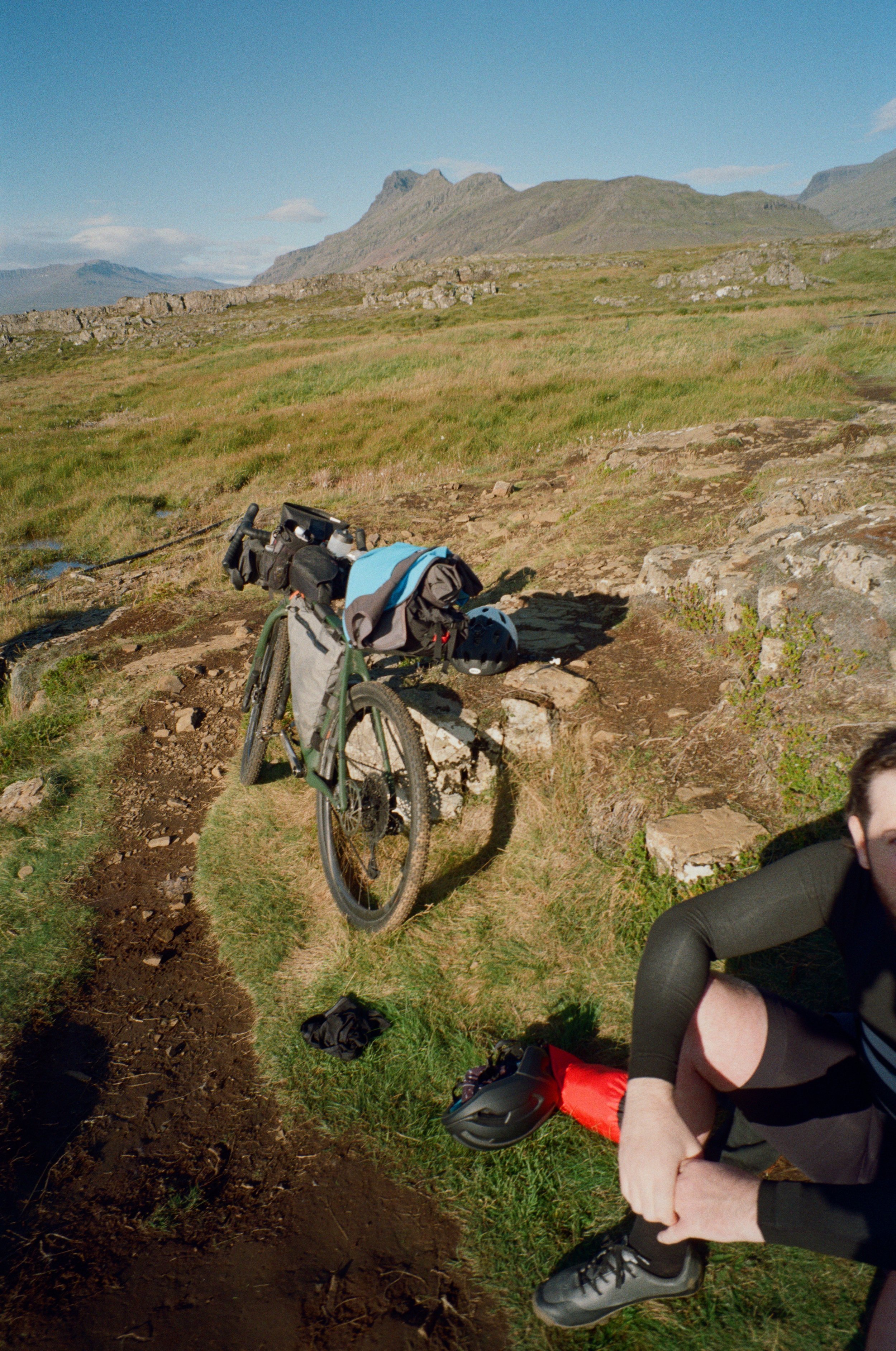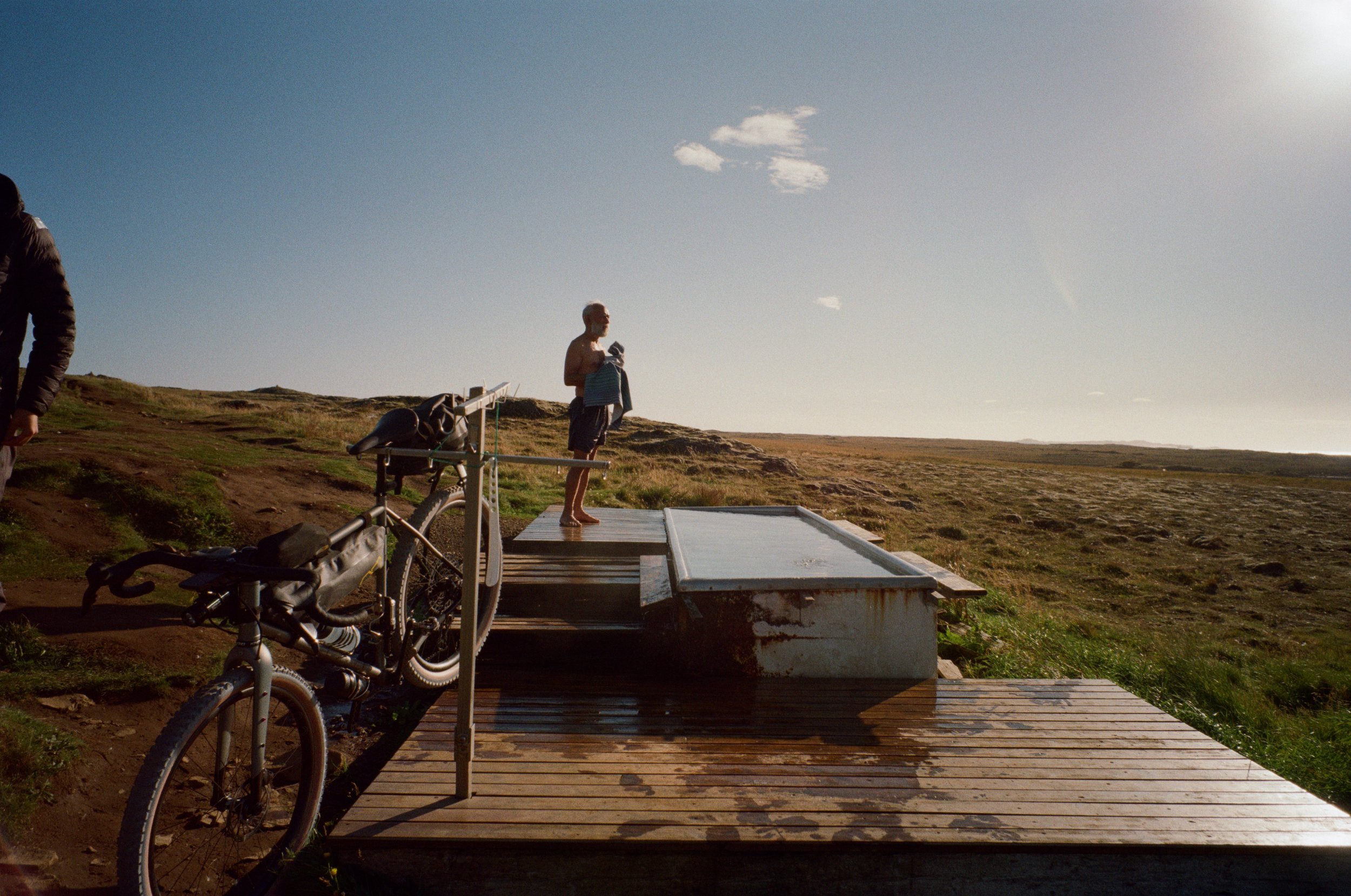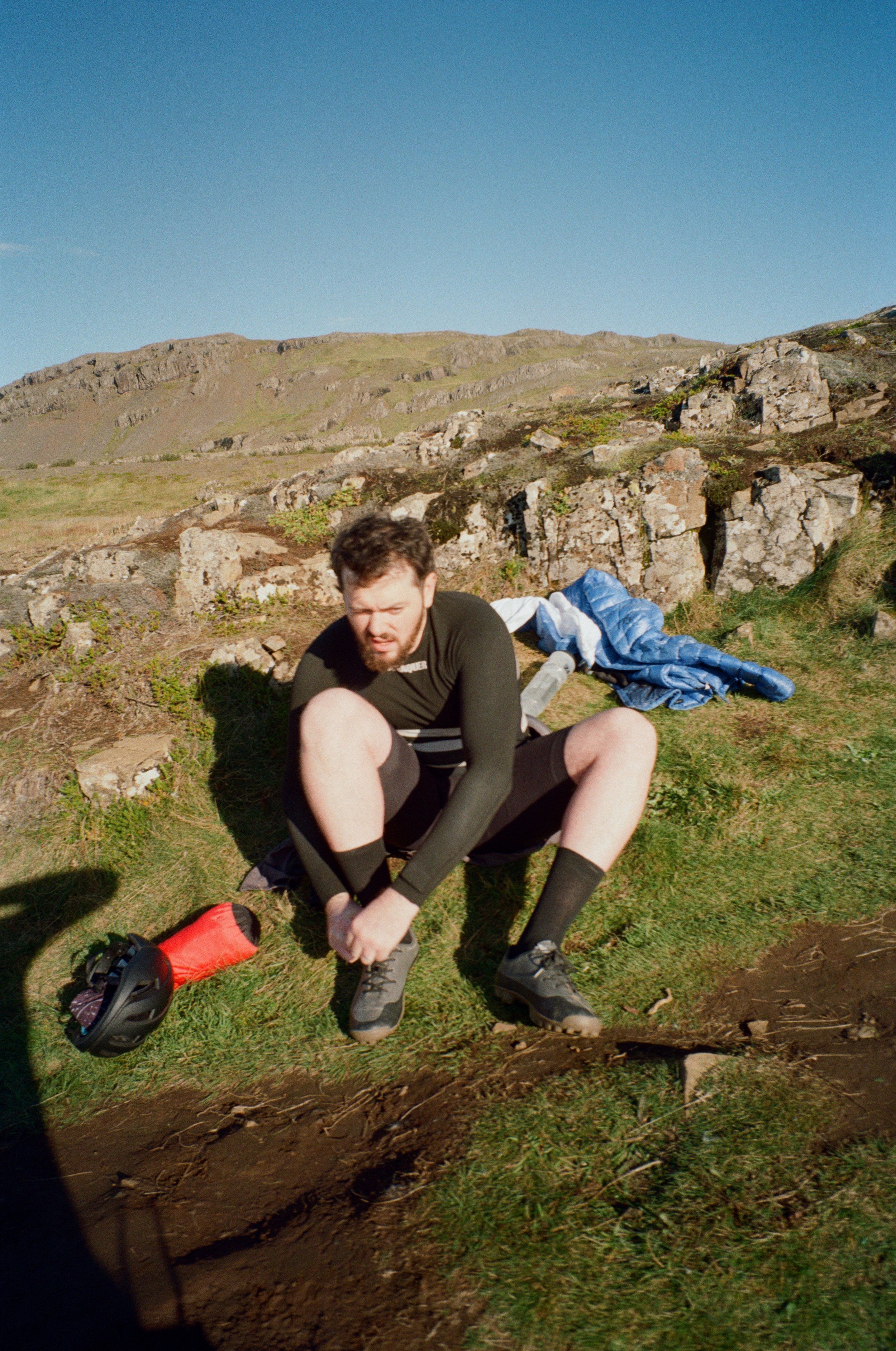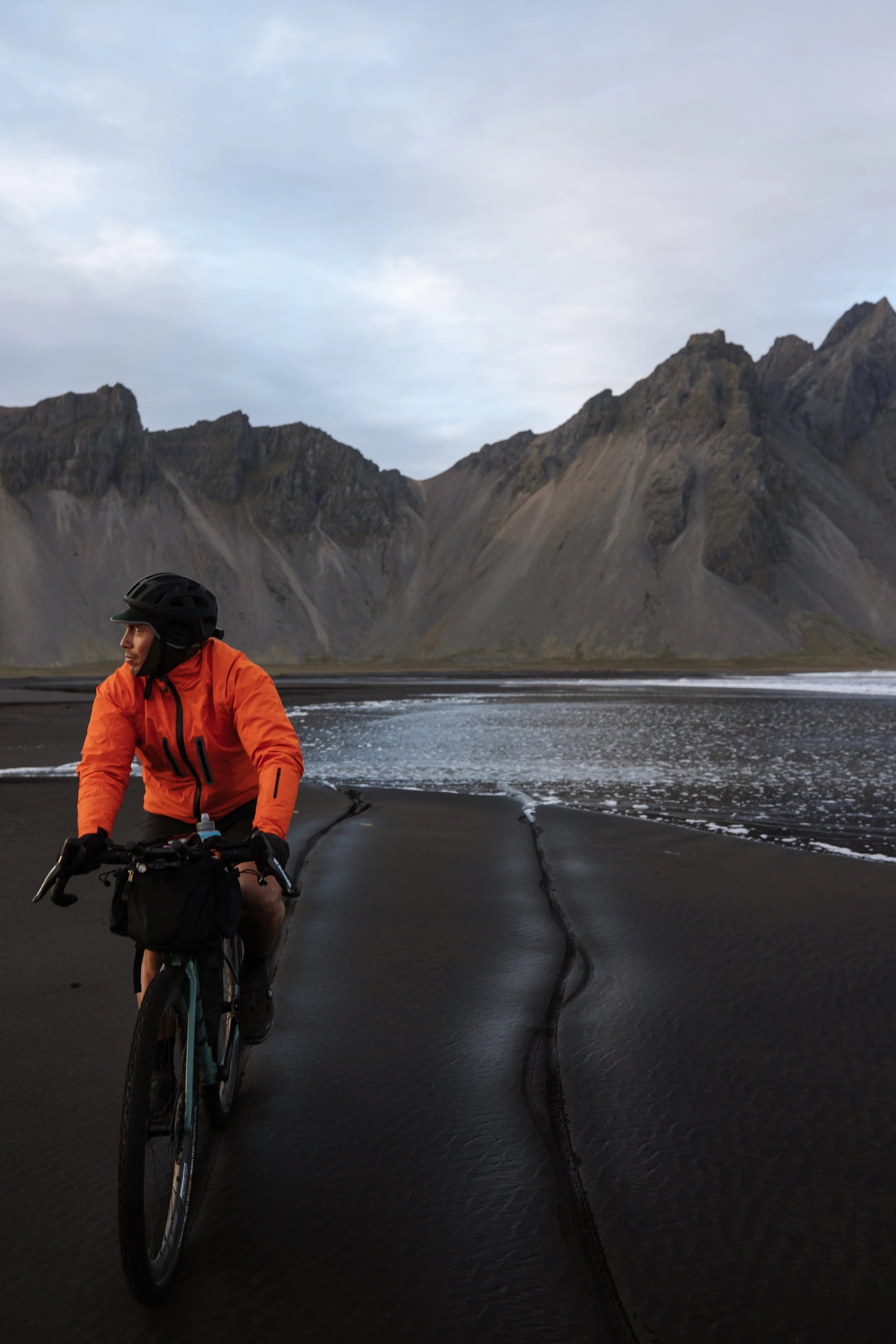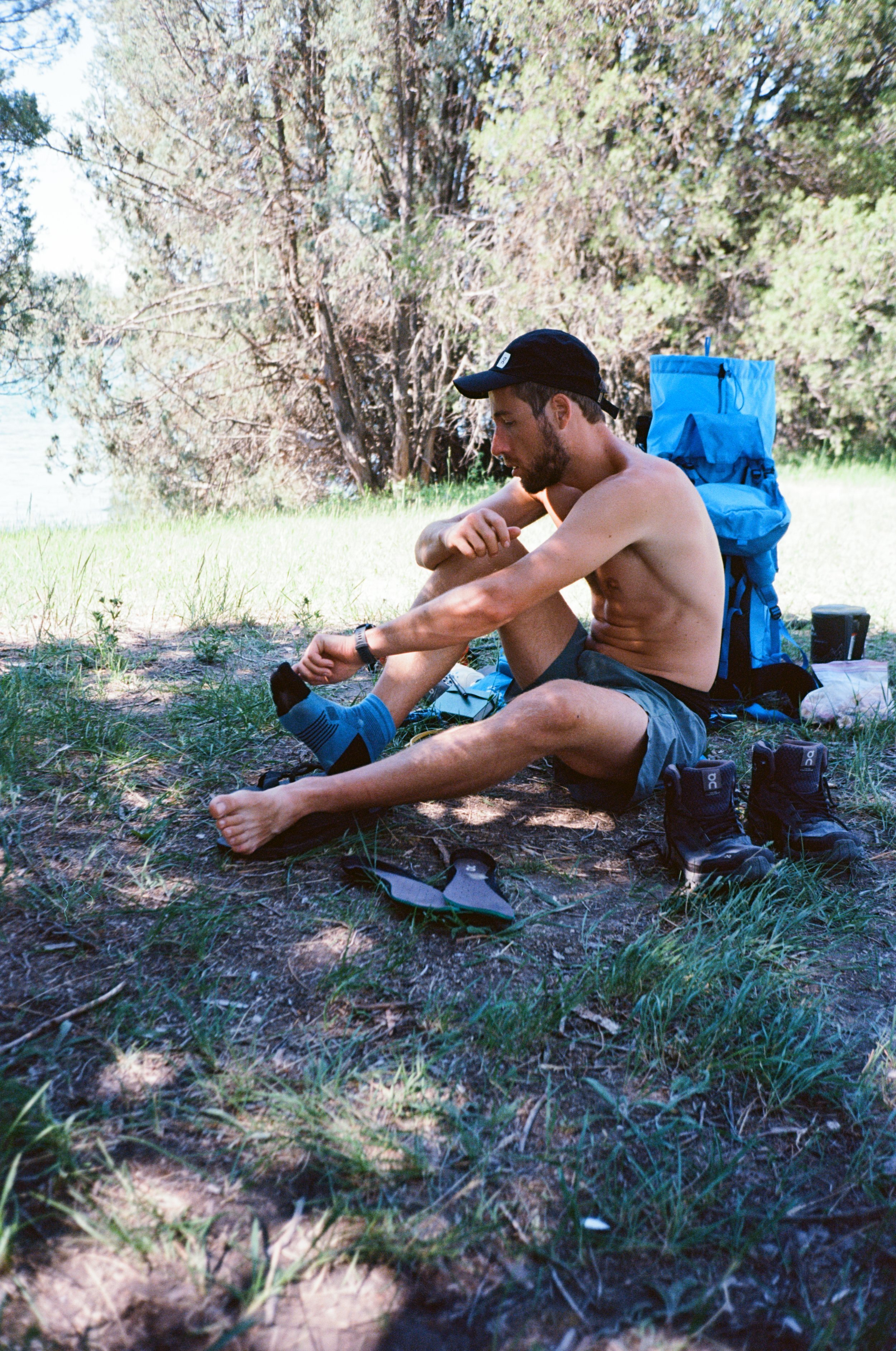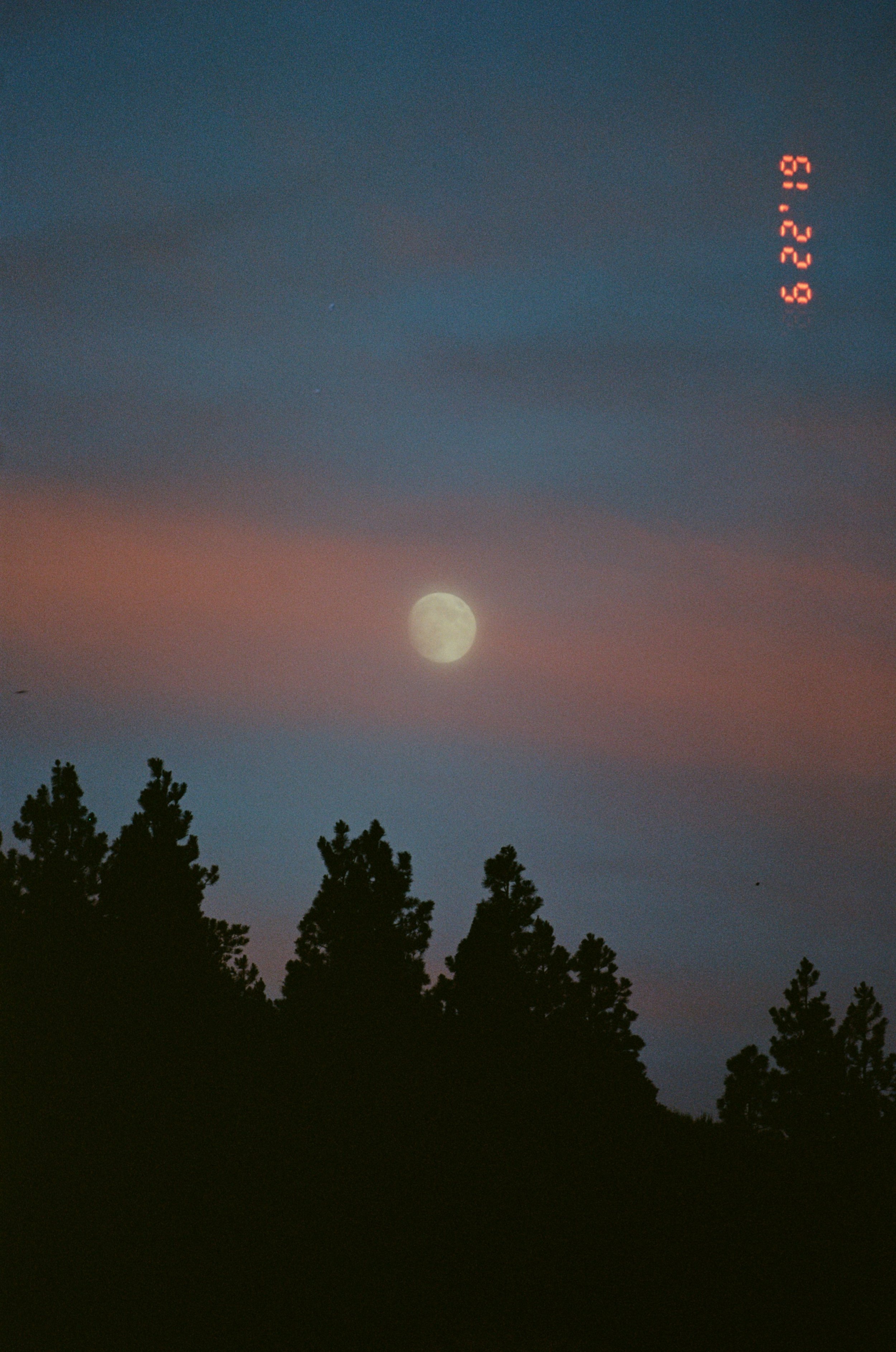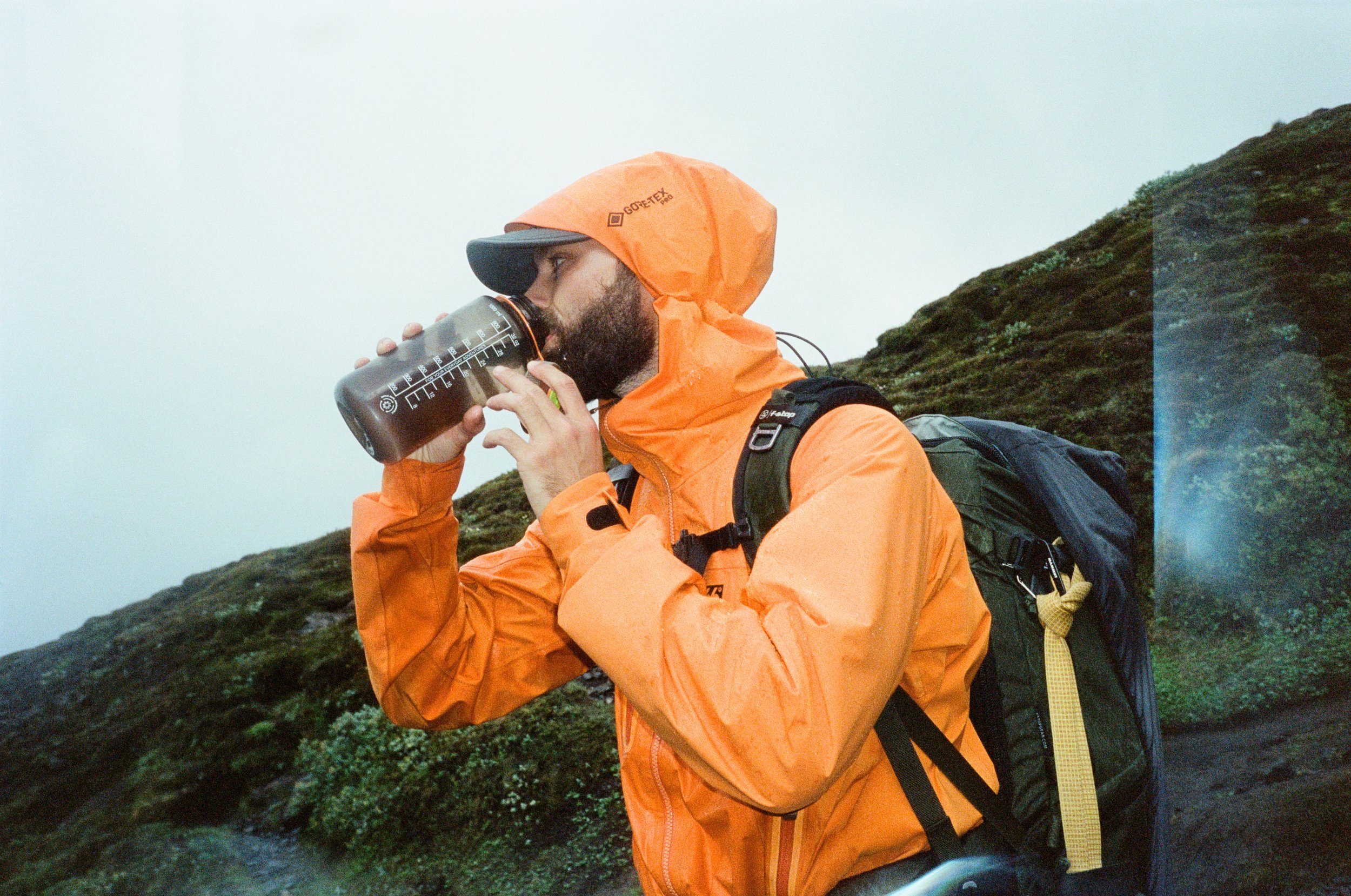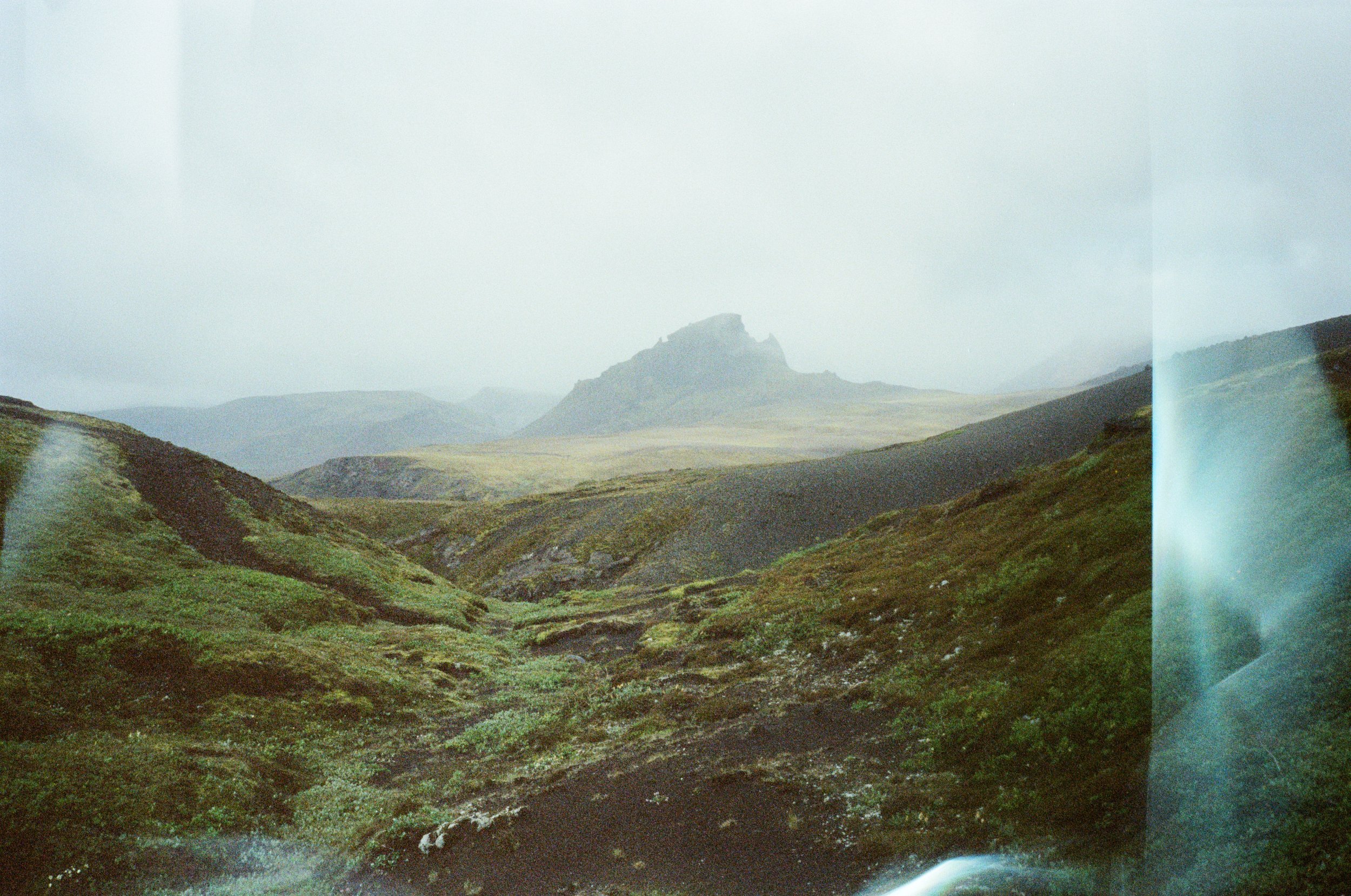The Eastfjords of Iceland by gravel bike
In the autumn of 2021, Benjamin Hardman, Chris Burkard, Steve Booker, and I sat out to cycle the Eastfjords of Iceland, unsupported. Why the East? Well, there are a few reasons such as its mouth watering topography and its gravel roads that skirt the beach but the chief reason is as follows: They are still unknown to the rest of the world.
Contrary to the Westfjords, the Eastfjords are not on every ‘must see’ blog about Iceland. Aside from the town of Seydisfjordur, with its rainbow sidewalk, there isn’t much out there about this area which is exactly why we’re here. It turned out to be such a memorable trip that I turned into a new book.
This is an excerpt of Vol 03 of Adventure Buddies which drops on November 15 (along with Vol 02)
“Adventure is giving adult means to childhood dreams.”
Sylvain Tesson, French Explorer
Its with with that quote in mind that we did the first pedal strokes out of the sleepy town of Seydisfjordur. It was a pretty glorious September day, the sun was out, and the road was almost dry (which is a luxury when riding in Iceland in the fall) as we began the lengthy climb out of the fjord.
Obligatory start photo with the Seydisfjordur church behind.
L to R: Alex Strohl, Chris Burkard, Steve Booker, Benjamin Hardman.
Photo by Evan Ruderman
Our final itinerary
Steve Booker on the leg stretching routine
Ben, smashing past a low point of Day One
Being now used to the Montana weather I’m not one to be opposed to a bit of rain here and there. Day two however, delivered a perfect Icelandic ‘Skitta-mix’ (Shit mix in Icelandic) of rain and wind that I never experienced before. We got an early start to avoid the bulk of the storm that was fast approaching, and I’m going let you into a little secret: there is always a storm approaching in Iceland, but we still got totally drenched, and blown off the road a handful of times. Our frame bags turned out to be very powerful sails in the sideways wind which made the handling of the bikes a bit… erratic.
Nevertheless we made it to our hotel just in time before the 60mph wind gusts started. There were so fierce that the waterfall behind the building started flowing upside down, the wind lifting its flow into the sky.
Day two was one to remember
In the morning of our third day, after being gently rocked to sleep by the storm, we woke up to zero winds and clear skies. Iceland in a nutshell.
A few hours into Day three, we ran into these natural hot springs outside of Djúpivogur. It was a treat to get out of the headwind for a ‘hot’ minute.
We had already been cycling for 85 miles, most of them into a gruelling headwind, but Chris suggested we do a four mile detour to go ride on the beach near Hofn. You know, ‘that beach’. Sometimes in life you only have one shot at doing something, and when is the next time I’ll be within pedalling distance of this beach I’ve so frequently visited by car. I obliged, and I’m glad Chris insisted because, what a sunset it was…
Our last day wasn’t a walk in the park either. The weather had worsened and there was a fresh dusting of snow on the peaks above us. The headwind? Still blowing.
Still it was a relatively shorter day with about 45 miles to cover so we raided the breakfast buffet at the hotel, shoving three or four croissants in our pockets, saddled up and got on our way.
On the end of Day Four, with frozen toes and soaked pants, we reached our final destination — the Glacier Lagoon.
Our ending point, the Glacier Lagoon on the south coast
These images and journal entries, along with many more, will be included in the “The Eastfjords — by Sail Boat & Gravel Bike” limited edition photo book that releases on Nov 15 on Adventure Buddies. If you’re subscribed to my newsletter (thank you), you will get an invite to order before everyone else. If you are not a subscriber, feel free to subscribe below to get the order email.
Lost Valley - Where the National Park Isn't
Here is a story that has been in the making for more than a year… In fact, I became so enthralled with this trip that I turned into a photo-book titled “Lost Valley — Where The National Park Isn’t’" which is releasing on November 15 on Adventure Buddies. This is an excerpt of it with some juicy nuggets, if you will. The book will be 64 pages long and features many, many more photos.
In the summer of 2021, my friend Isaac Johnston and I were so fed up with how crowded our backyard had become since the beginning of the pandemic that we had to do something about it. For reference, we both live in Montana’s Flathead Valley, which is known for being the gateway into Glacier National Park, and upon close inspection we realized that everyone was congregating in the same places. The spots that were on Instagram, AllTrails, and blogs…
The beauty of that is that if you just ‘pull up’ a map and start looking the opposite direction of these spots you land on an insane amount of space to roam free, un-encumbered by the droves of people also trying to have a nice time outside.
Our thinking was simple but effective: If there are more than 500,000,000 acres of public land within the U.S, why are we all stuck in the same 100,000 acres? Why don’t we go the opposite direction of Glacier National Park? And that’s exactly what we did.
DAY 1: #3 NO TRESPASSING
Because we’re walking straight south towards the river in an area that has no marked trails, we’ve had to jump a few fences. We still haven’t seen anyone, just wildlife.
In one of our fence jumping episodes, we’ve run into a man called Wacey Cathy who owns a cattle ranch. Instead of kicking us out of his ranch he’s offered us water and showed us around.
Since there are very few people down here they’re actually happy to meet us. The less of us around, the more we have time for each other it seems.
Funny anecdote about us trespassing into Wacey Cathy’s ranch — Isaac ended up coming back and making a film and photo series about their family. You never know where these trips will take you…
DAY 2: #6 RIVER FORD
Isaac thought it would be fun to ford this smaller arm of the river and I agreed. Since there was nowhere to go on the other side, he forded back and I got some photos. This is a common pattern of our trips together — his appetite for trying things always makes for good photos or at least stories.
DAY 2: Entry #10 BIG BOI CAMP
We sat up our second camp right on the shores of the river, as is tradition, so we can have unlimited water for drinking, cooking, and our evening tisanes. As we’re sitting on our pads, we hear a ruckus in the bushes below. There is no doubt, a large animal is approaching behind us and the night is falling…
DAY 3: Entry #16 WILDFLOWERS
Around mid-day the sky is entirely covered in clouds and the light is so gloomy it looks like its going to rain. Luckily, the dirt road we’re following is littered in mood-lifting wild flowers. Only a few miles to the end.
These images and journal entries, along with many more, will be included in the “Lost Valley — Where The National Park Isn’t” limited edition photo book that releases on Nov 15 on Adventure Buddies. If you’re subscribed to my newsletter (thank you), you will get an invite to order before everyone else. If you are not a subscriber, feel free to subscribe below to get the order email.
So, who’s planning to get the new book?!
The Laugavegur Trail In A Storm
Words by Matthew Tufts
The Laugavegur Trail In A Storm
Professional photographers and filmmakers Alex Strohl and Benjamin Hardman are no strangers to Iceland’s surreal landscapes and notoriously temperamental weather. Strohl has made around 15 trips to the North Atlantic island; Hardman lives there full-time. Last July, the two friends embarked on an extended hike of the Highland’s iconic Laugavegur route—something they jokingly referred to as the “Long-avegur.”
The plan was simple: experience the otherworldly landscapes of the classic Laugavegur while tacking on a few additional summits and extra mileage. The weather, as is often the case in the land of fire and ice, had other plans.
“When I’m in Iceland, I really want to embrace the grey and the fog,” says Strohl. “We’re thinking about colors in a different way.” He explains how their decision to go in Iceland’s early season, July, while snow was still present along the trail, created a unique palette of orange and white.
“It’s humbling to walk an entire day in the rain, being shaken by the wind,” says Strohl of the storm that enveloped the trail halfway through the first day. “It’s just you in your head—even if you’re walking with somebody you can’t hear anything with the wind. You have to bring in some meditation.”
Hardman and Strohl didn’t arrive in camp until nearly 1:00 a.m. the first day. Due to Iceland’s midnight sun (or midnight ambient storm light, as it were), darkness never overtook them. In fact, in those conditions, they contemplated walking straight through in 24 hours to avoid staying in their soaked tent.
They opted to stay on the trail and found silver linings: the pair walked through miles of lava fields that, in dry conditions, typically batter your face with sand; safe to say, the duo didn’t encounter those particular inclement conditions. At another point, they were treated to a warm meal at an unopened restaurant by friends of Hardman (it pays to know a local). And despite the storm—or in part, perhaps, because of it—the two photographers captured images of Iceland in its most natural attire.
Strohl always packs a small 35mm analog point-and-shoot—an Olympus Mju ii—in his hip pocket. It’s a little extra weight (and Strohl is an ultralight connoisseur), but it’s a tool he has ready at a moment’s notice to capture the little moments in between.
After all, it’s those memories—from soaking river crossings to snapped tent guylines to the most appreciated of warm meals—that make an adventure in any conditions with good company worth it.
Dundee — My father's Life Story
Words by Matthew Tufts.
Chirping birds and rustling chestnut leaves punctuate a cool autumn morning, the only sounds but for the occasional musings of Frederic Strohl—affectionately known as “Dundee” to his son, Alex Strohl—who methodically cultivates his 70 acre estate in the wooded south of France. Frederic planned to nurture this plot near Ardeche since he bought the land at the age of 18; at 83 years young, it’s been a long process coming, but one he’s looked forward to his entire adult life.
A turbulent early childhood contrasts the quaint, pastoral scene at the estate. Delivered just weeks after his mother made a transatlantic crossing, Frederic Strohl was born in Paris a few years before the start of the Second World War. He vividly recalls sheltering from German bombings in musty basements, living off meager rations in occupied France while his father fought in the covert resistance.
"Dundee — A family connection helped Frederic, his sister, and his mother escape the capital city to the French Alps where quality of life dramatically improved. Fond memories of alpine living filled his formative youth—commuting to school aboard a sled pulled by a Great Dane, learning to ski, indulging in Savoie cheeses—ultimately shaping a connection to life beyond the city that changed his life’s trajectory.
In his late teens, Frederic’s grandmother imparted her love for trees and the south of France; she implored him to settle near her home so that he could carry on the task of caring for the land. At age 18, he purchased a dilapidated plot of adjacent land, knowing it would be a place he’d return to steward, but only after a life experienced abroad.
A chance trip to visit relatives in the United States introduced him to the American West. Enamored by a vastness and scale incomparable to anything he’d seen in Europe, Frederic earned a degree in forest management from Montana State University in Missoula and began work surveying and planning forestry roads. A half century and a generation later, his son, Alex, would map gravel biking routes through Northern Montana. Alex, a new father, may soon pass along their shared passion to his daughter.
Though future employment would take Frederic around the world, he maintained the dream of coming home to care for his estate and the trees his grandmother taught him to love. At the age of 65, Frederic returned to Ardeche, this time for good.
He’s retired now, but spends every day on the property, working with his hands, stewarding the forest. He hasn’t taken a day off in years. The work brings him joy and the movement keeps him in good health. But more than anything, Frederic feels a sense of purpose: the community—hunters, hikers, village locals—benefit from his stewardship. The planet benefits from his retirement plan. And perhaps, one day, it will be passed along family lines, and the next generation will care for the land as he learned from his grandmother
Thank you to Danner Boots for supporting the story and Matthew Tufts for turning my interview of him into this write up.























